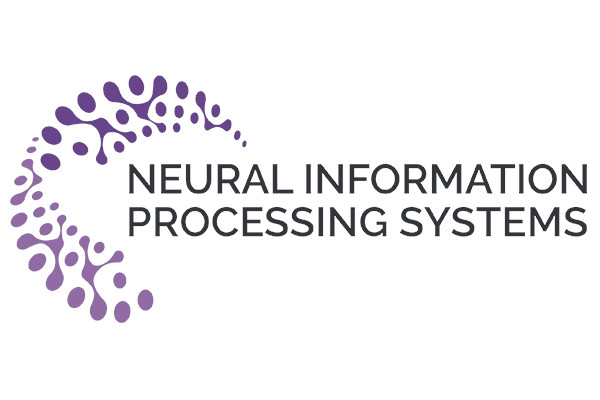13.03.2025
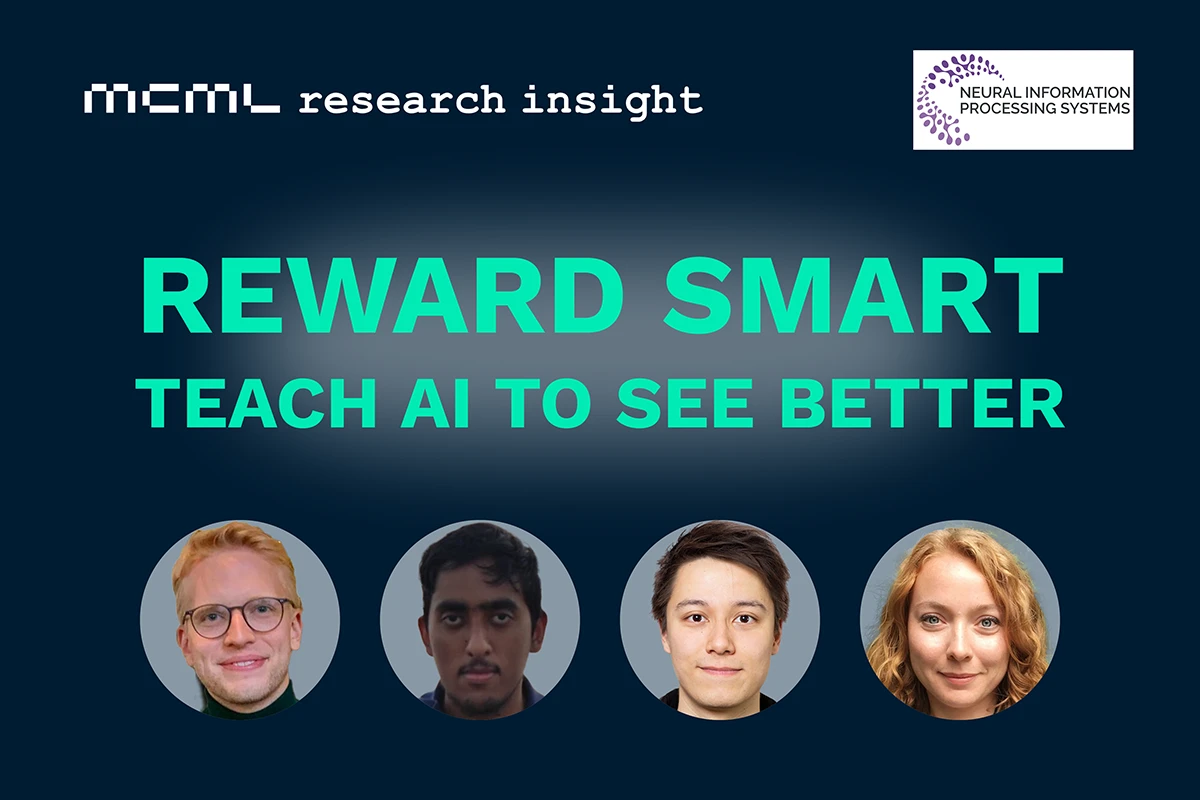
ReNO: A Smarter Way to Enhance AI-Generated Images
MCML Research Insight - With Luca Eyring, Shyamgopal Karthik, Karsten Roth and Zeynep Akata
Despite their impressive capabilities, Text-to-Image (T2I) models frequently misinterpret detailed prompts, leading to errors in object positioning, attribute accuracy, and color fidelity. Traditional improvements rely on extensive dataset training, which is not only computationally expensive but also may not generalize well to unseen prompts. To address this, our Junior Members – Luca Eyring, Shyamgopal Karthik, and Karsten Roth – together with PI Zeynep Akata and collaborator Alexey Dosovitskiy from inceptive, proposed a new approach: Reward-based Noise Optimization (ReNO).
The Challenge: When AI Gets It Wrong
«T2I models often struggle with complex prompts, leading to issues like incorrect text rendering, attribute mismatches, unrealistic object combinations, and color leakage.»
Luca Eyring et al.
MCML Junior Members
Recent advancements in T2I models have significantly improved AI-generated visuals, yet challenges remain when it comes to complex compositions, fine details, and spatial accuracy. For example, when asked to generate “a blue scooter parked near a curb in front of a green vintage car”, many models might struggle with correct object placement, resulting in overlapping or misplaced elements. Fixing these issues traditionally requires costly retraining for incremental improvements.
Another key issue is reward hacking—a phenomenon where AI models optimize for high reward scores without truly improving image quality. This happens when a reward model favors certain characteristics, leading the AI to exploit shortcuts instead of genuinely following the prompt. This can result in images that score well on automated evaluations but fail to meet human expectations.
To address these challenges, the authors propose ReNO (Reward-based Noise Optimization), a solution that enhances image generation without costly model retraining. ReNO refines the initial noise using signals from one or multiple human preference reward models, improving spatial accuracy and object placement to produce more coherent and visually accurate outputs.
Example Prompt: “A blue scooter parked near a curb in front of a green vintage car”

©L. Eyring et al.
Generated image with an object positioning error. The green vintage car is far too far away.

©L. Eyring et al.
ReNO refinement with correct positioning of the green vintage car.
«Within a computational budget of 20-50 s, ReNO-enhanced one-step models consistently surpass the performance of all current open-source T2I models.»
Luca Eyring et al.
MCML Junior Members
The ReNO Approach: Smarter Noise, Better Results
ReNO enhances image generation at inference time by optimizing the starting noise. Instead of altering the model itself, ReNO fine-tunes the initial noise using reward models—AI systems trained to evaluate image quality and prompt adherence. This iterative optimization process refines compositions, improves object rendering, and enhances overall image coherence while maintaining computational efficiency.
To mitigate reward hacking, ReNO combines multiple reward objectives, preventing the system from over-optimizing for any single metric. This ensures a balanced approach where images are both aesthetically pleasing and faithful to their prompts.
Qualitative Results of two different one-step T2I models with and without using ReNO over the prompt: “A curious, orange fox and a fluffy, white rabbit, playing together in a lush, green meadow filled with yellow dandelions”

©L. Eyring et al.
PixArt-a DMD

©L. Eyring et al.
PixArt-a DMD + ReNO

©L. Eyring et al.
SD-Turbo

©L. Eyring et al.
SD-Turbo + ReNO
Key Benefits of ReNO
- Improved Prompt Adherence – Ensures better alignment between text descriptions and generated images.
- Efficient Performance – Works within a 20-50 second processing window, making it practical for real-world use.
- Competitive Results – ReNO-enhanced images outperform major open-source models
«Our results highlight the importance of the noise distribution in T2I models and encourage further research into understanding and adapting it.»
Luca Eyring et al.
MCML Junior Members
The Future of AI-Driven Creativity
ReNO demonstrates that enhancing AI-generated images doesn’t require extensive model retraining. By focusing on noise optimization, it provides a practical, efficient, and scalable solution for improving T2I performance. This innovation could lead to more accessible, high-quality AI art tools.
Read More
Curious to explore ReNO? The code is open-source—check out the GitHub repository with over 100 ⭐ and experience the future of AI-driven image generation. You can also try it out directly with the Hugging Face Demo.
Here’s ReNO in action
We have tried Reno ourselves and were impressed. The first image was generated using the SDXL Turbo model without ReNO, while the second image was generated using the Hugging Face demo. Both with the prompt: “An orange chair to the right of a black airplane”. For the other two pictures we used the same model and the prompt was: “A BMW GS 1250 with a driver drinking coffee” - and not with a coffee as co-rider 🙃.

SDXL Turbo: An orange chair to the right of a black airplane

SDXL Turbo + ReNO: An orange chair to the right of a black airplane

SDXL Turbo: A BMW GS 1250 with a driver drinking coffee

SDXL Turbo + ReNO: A BMW GS 1250 with a driver drinking coffee
Explore the full paper published at NeurIPS 2024, one of the most prestigious conferences in the field of Machine Learning and Artificial Intelligence.
ReNO: Enhancing One-step Text-to-Image Models through Reward-based Noise Optimization.
NeurIPS 2024 - 38th Conference on Neural Information Processing Systems. Vancouver, Canada, Dec 10-15, 2024. URL GitHub
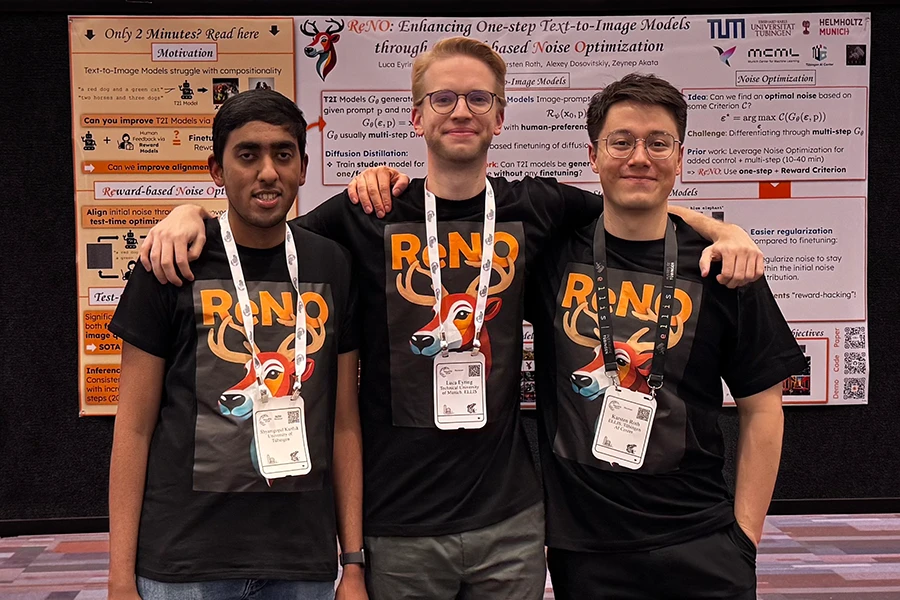
©Luca Eyring et al.
Poster Session at NeurIPS 2024
If you are interested in learning more about Zeynep Akatas group’s research, please visit EML Munich.
Share Your Research!
Get in touch with us!
Are you an MCML Junior Member and interested in showcasing your research on our blog?
We’re happy to feature your work—get in touch with us to present your paper.
Related
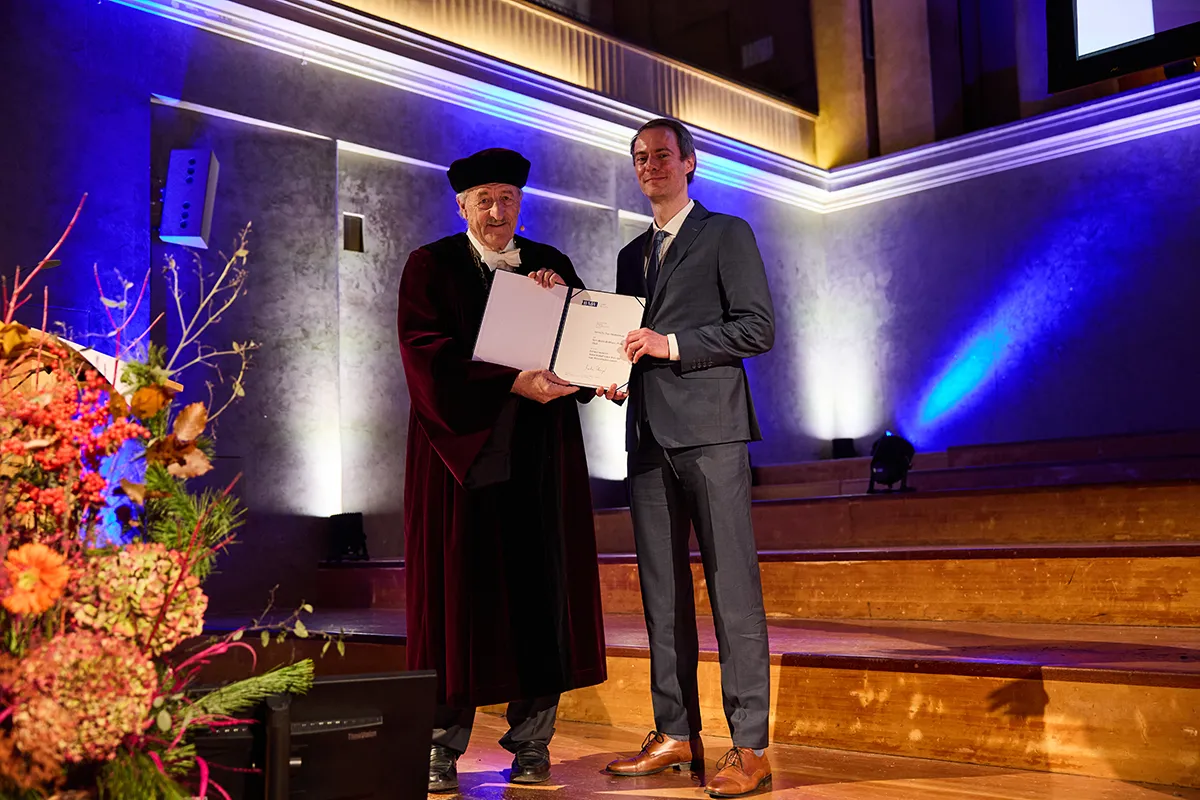
©BAdW / Karl Neunert
08.12.2025
Tom Sterkenburg Wins Karl-Heinz Hoffmann Prize of the Bavarian Academy of Sciences
MCML JRG Leader Tom Sterkenburg receives the Karl-Heinz Hoffmann Prize of the BAdW for his interdisciplinary research.
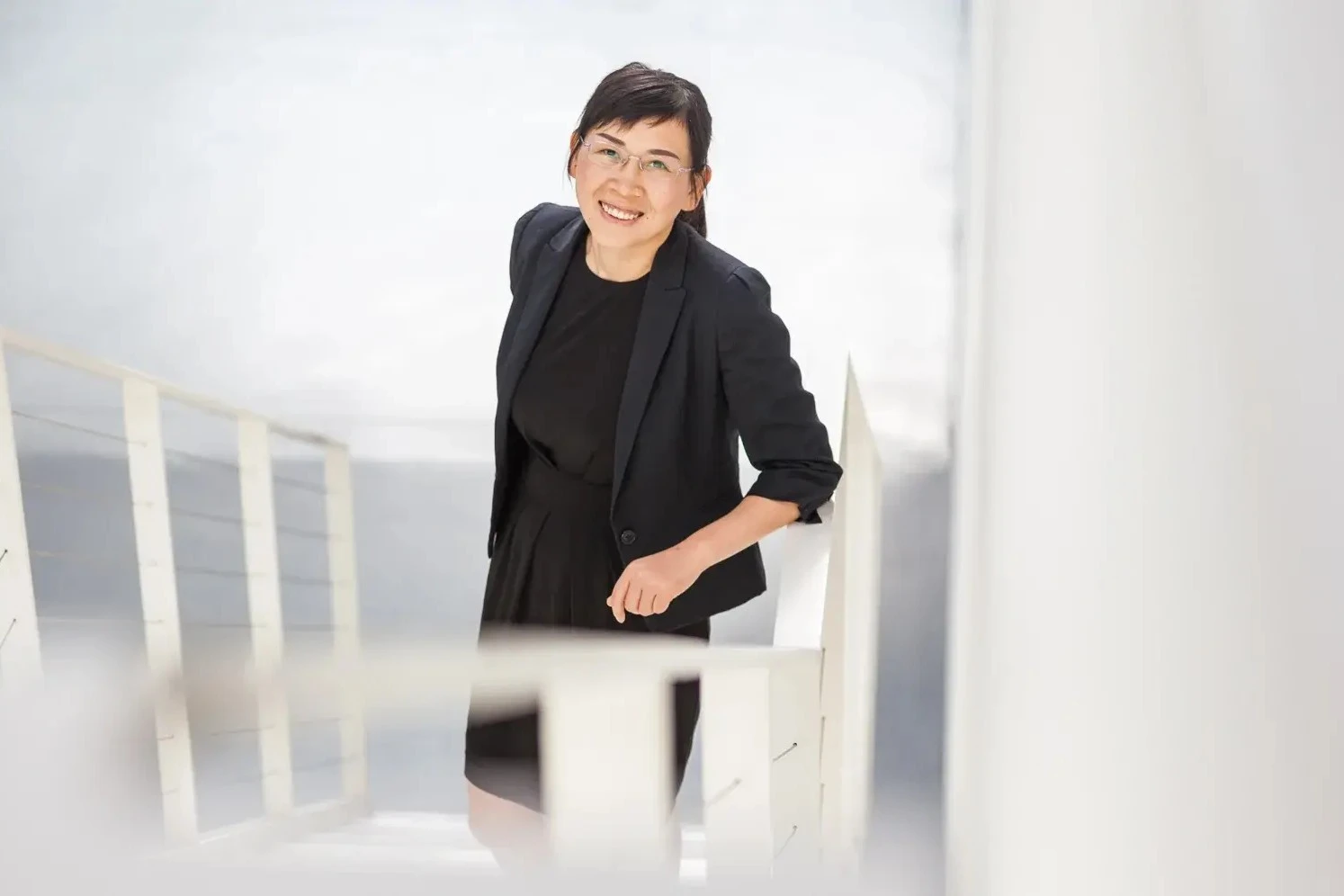
©Juli Eberle / TUM / ediundsepp Gestaltungsgesellschaft
04.12.2025
World’s First Complete 3D Model of All Buildings Released
Xiaoxiang Zhu’s team releases GlobalBuildingAtlas, a high-res 3D map of 2.75B buildings for advanced urban and climate analysis.
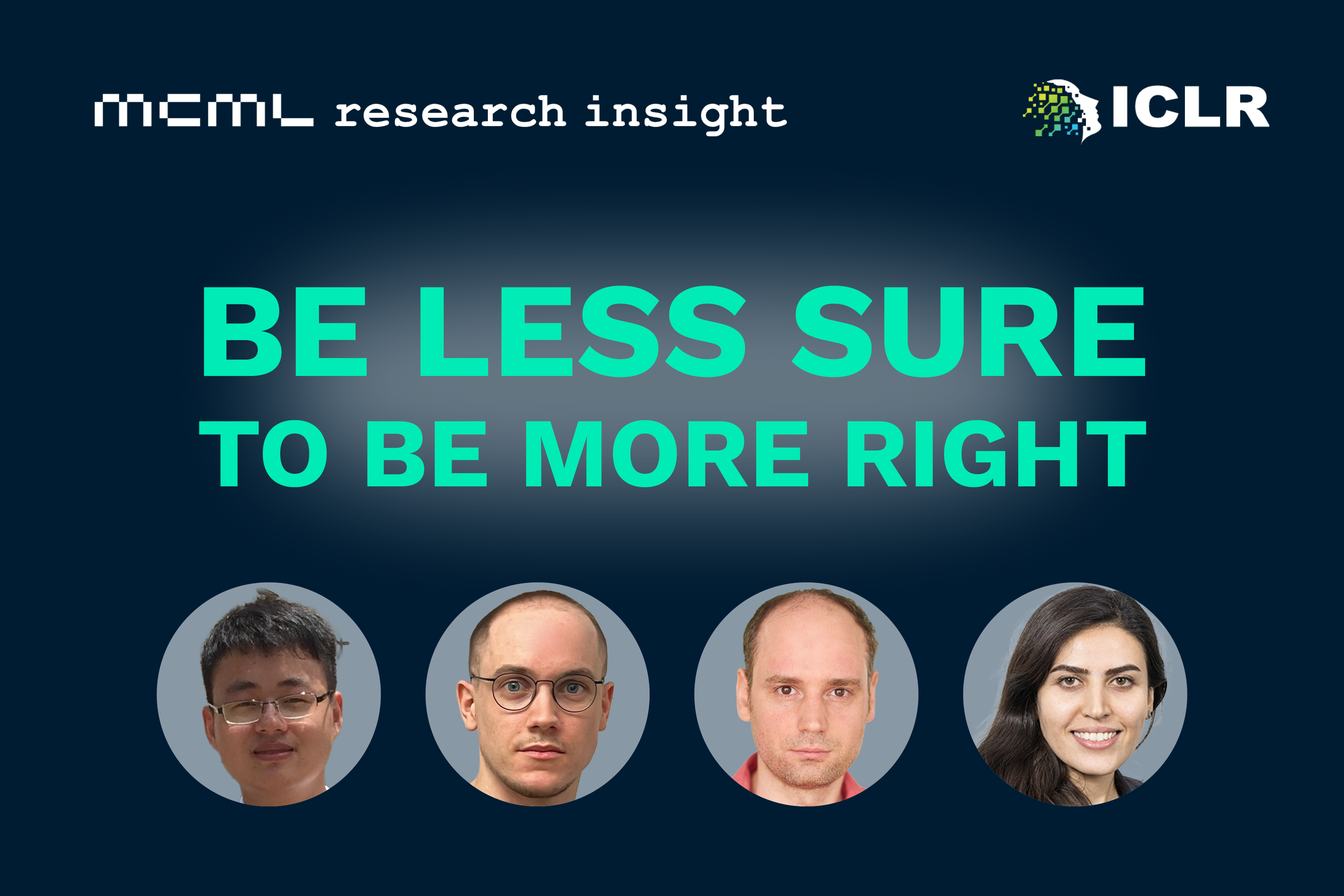
04.12.2025
When to Say "I’m Not Sure": Making Language Models More Self-Aware
ICLR 2025 research by the groups of David Rügamer, and Bernd Bischl introduces methods to make LLMs more reliable by expressing uncertainty.
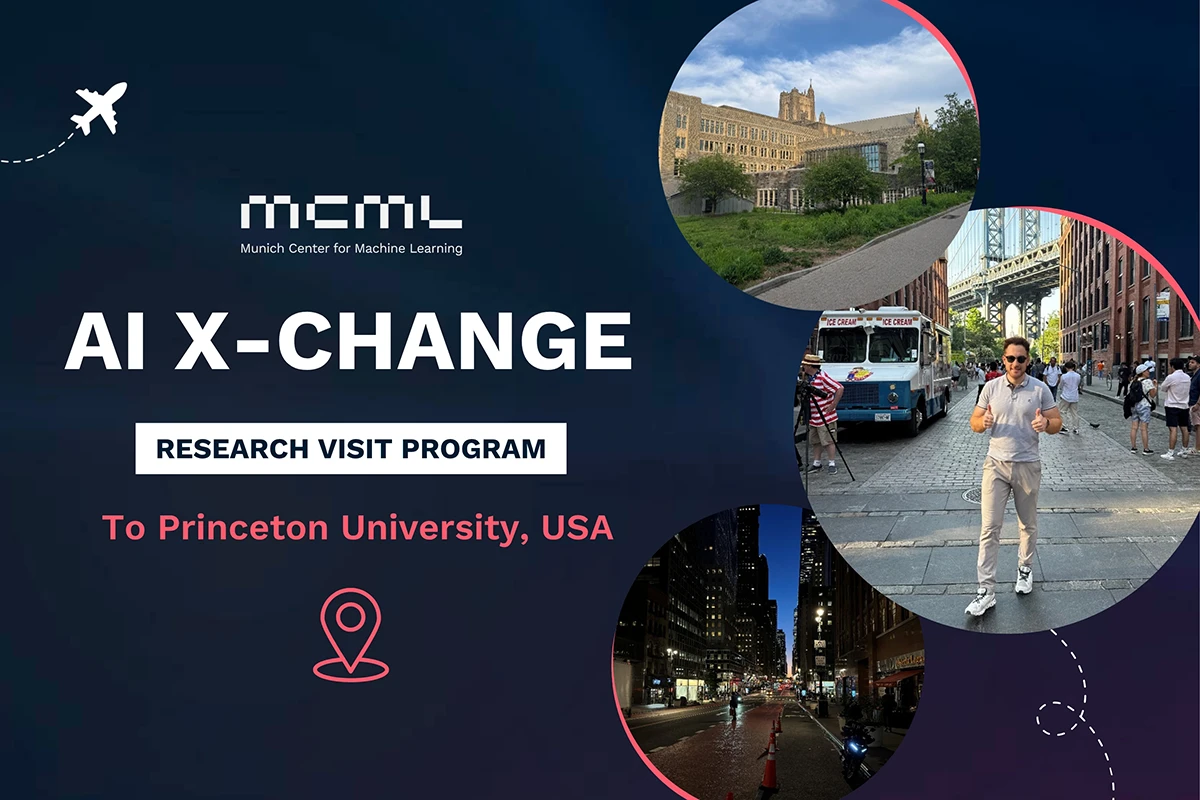
©MCML
01.12.2025
Research Stay at Princeton University
Abdurahman Maarouf spent three months at Princeton with the AI X-Change Program, advancing causal ML and studying short-form video platform effects.
